38+ SAMPLE Eviction Notice
-
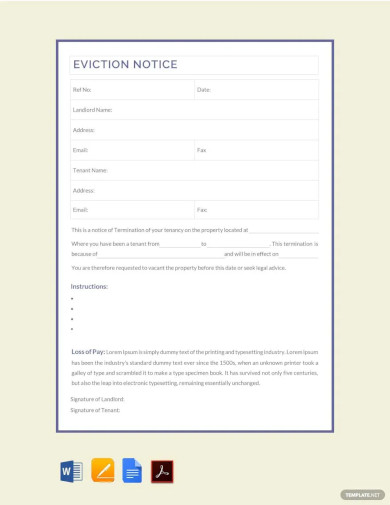
Simple Eviction Notice Template
download now -
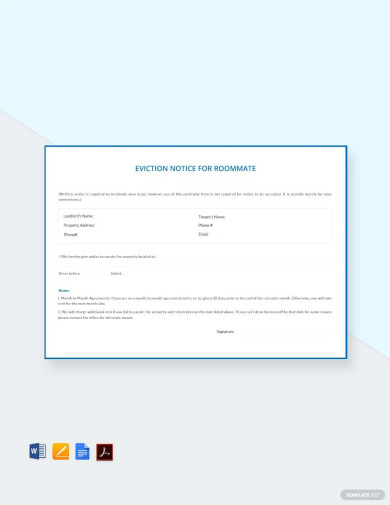
Eviction Notice for Roommate Template
download now -
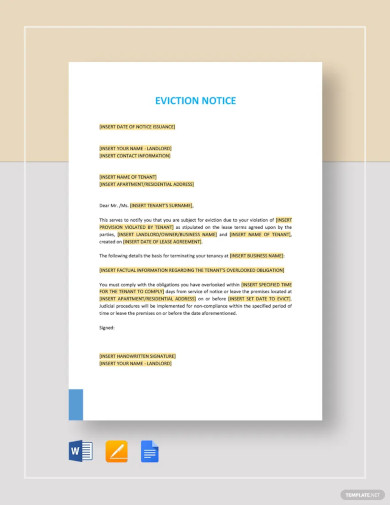
Basic Eviction Notice Template
download now -

COVID-19 Eviction Notice Letter Template
download now -
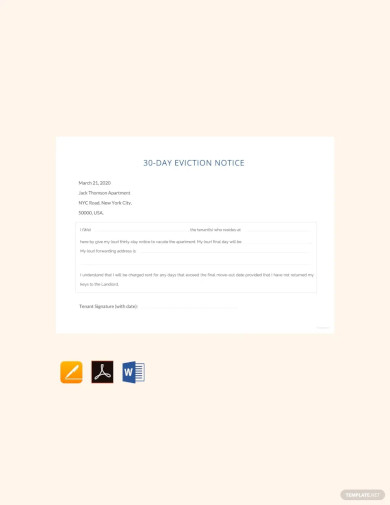
Free 30 Day Eviction Notice Template
download now -

Sample Eviction Notice Template
download now -
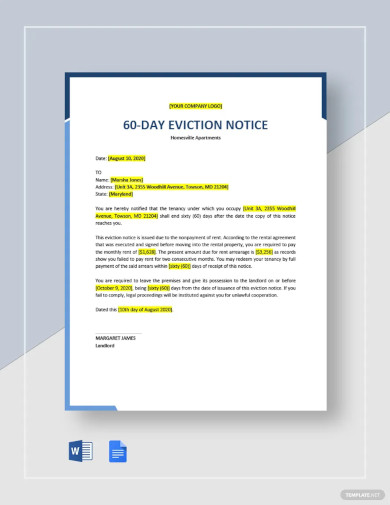
60-Day Eviction Notice Template
download now -
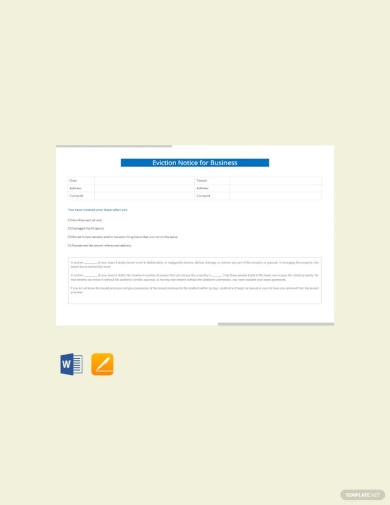
Eviction Notice for Business Template
download now -

Eviction Notice for Unpaid Rent Template
download now -
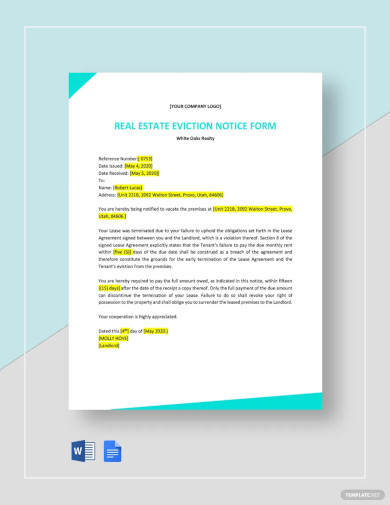
Real Estate Eviction Notice Form Template
download now -
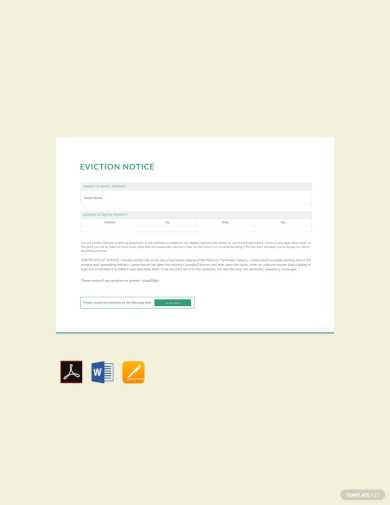
Free Blank Eviction Notice Template
download now -
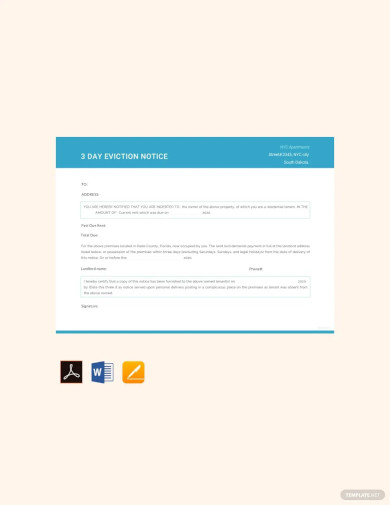
3 Day Eviction Notice Template
download now -
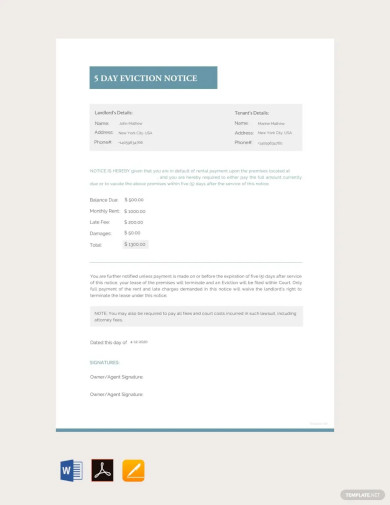
5 Day Eviction Notice Template
download now -
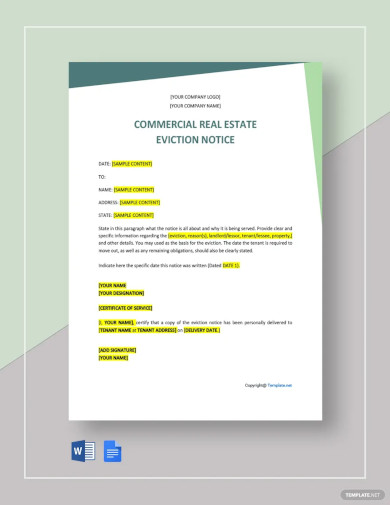
Commercial Real Estate Eviction Notice Template
download now -
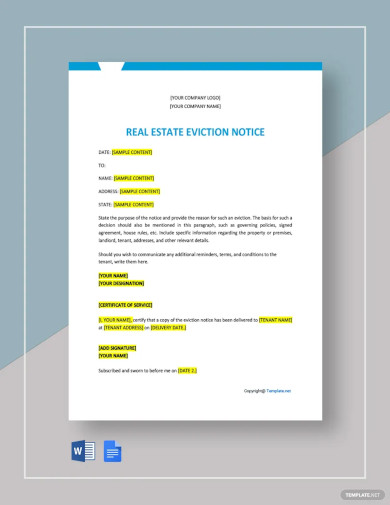
Free Blank Real Estate Eviction Notice Template
download now -
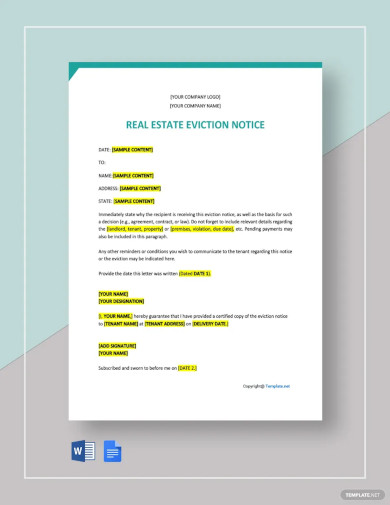
Free Sample Real Estate Eviction Notice Template
download now -
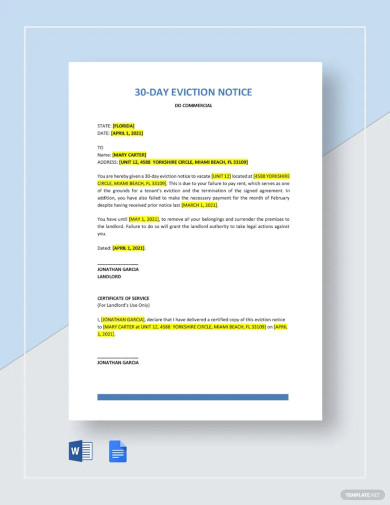
30 Day Real Estate Eviction Notice Template
download now -
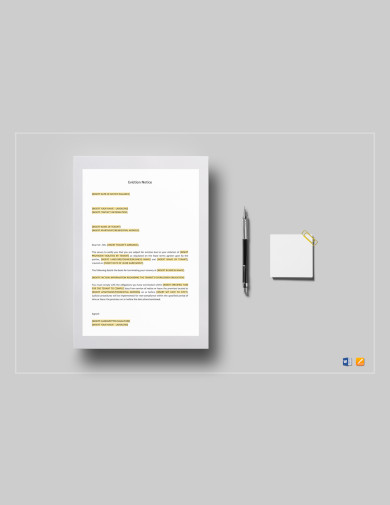
Standard Eviction Notice Template
download now -
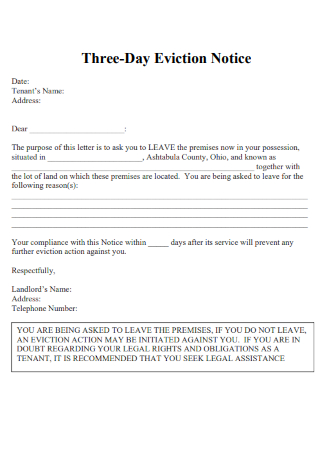
Three Day Eviction Notice
download now -
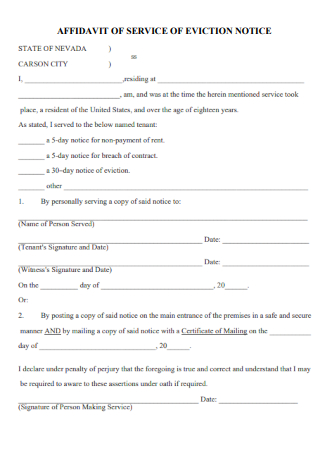
Affidavit of Service of 30 day Eviction Notice
download now -
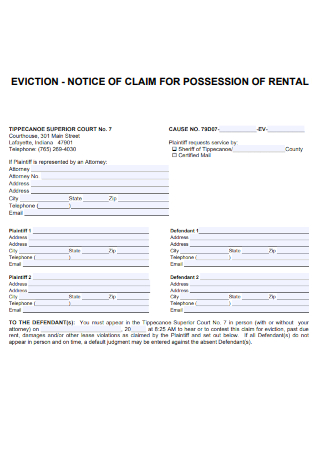
Roommate Eviction Notice
download now -
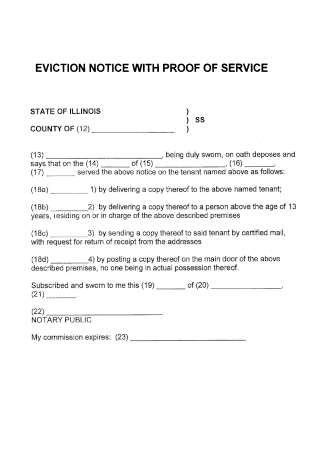
Family Member Eviction Notice
download now -
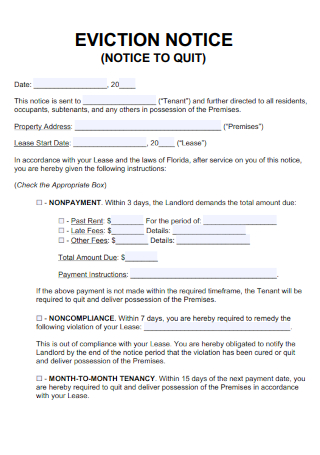
Apartment Eviction Notice to Quit
download now -
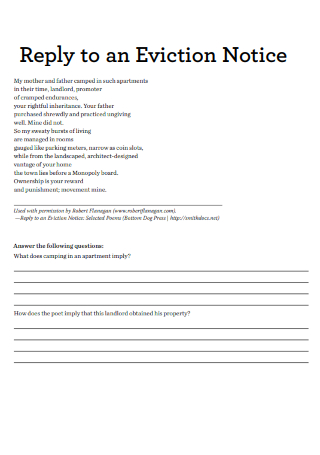
Reply to an Non Payment Eviction Notice
download now -
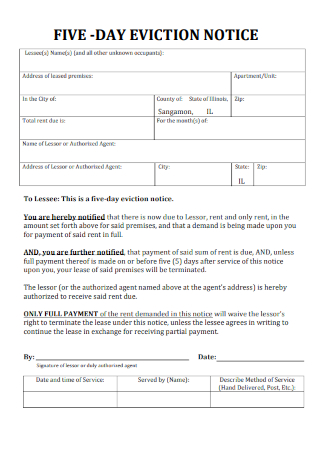
Five Day Legal Eviction Notice
download now -

Covid Notice of House Possible Eviction
download now -
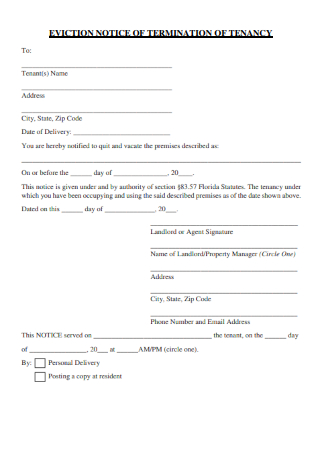
Eviction Notice of Termination of Property Tenancy
download now -

Sample Late Eviction Notice
download now -
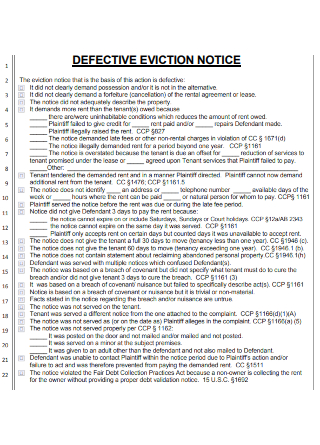
Defective Lease Eviction Notice
download now -
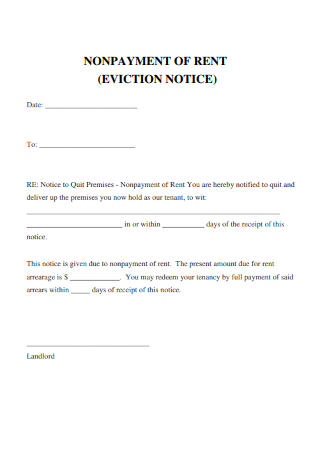
Nonpayment of Rent Eviction Notice
download now -
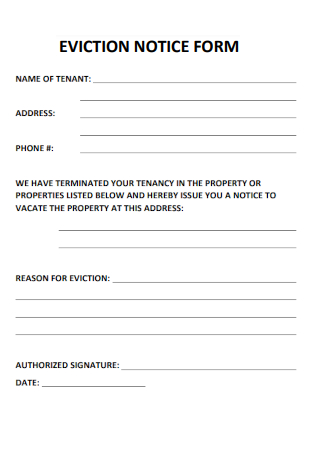
Eviction Notice Form
download now -
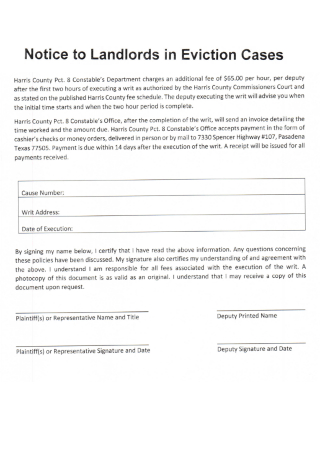
Notice to Landlords in Eviction Cases
download now -
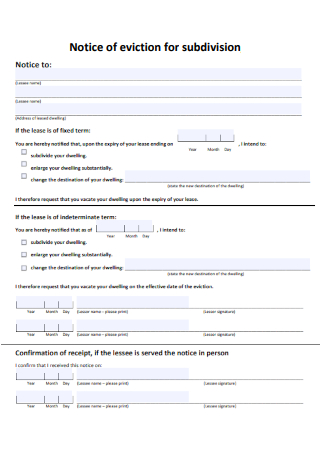
Notice of Eviction for Subdivision
download now -
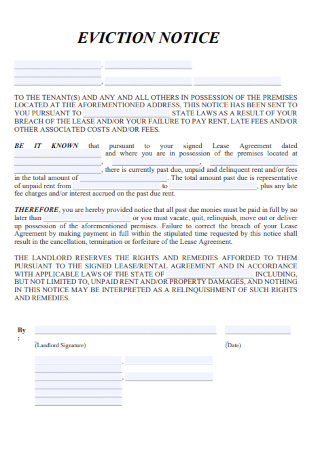
Printable Eviction Notice
download now -

Notice to Landlord of Eviction Protection of Covid 19
download now -
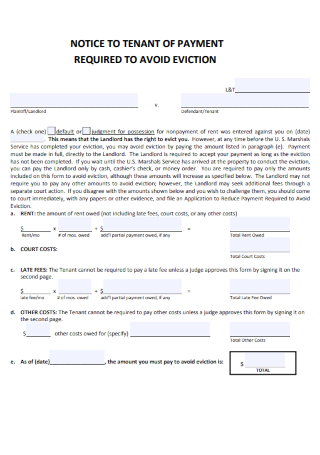
Notice to Tenant of Payment Required to Avoid Eviction
download now -
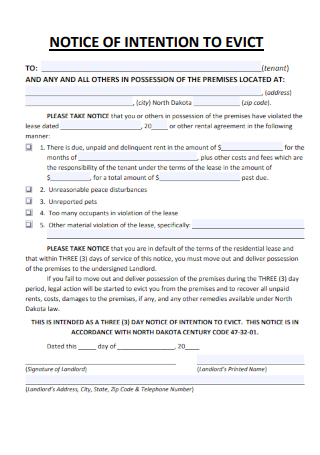
Notice of Intention to Evict
download now -
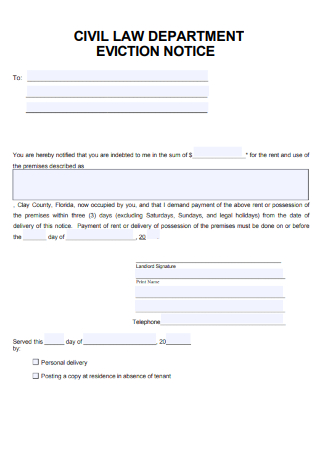
Civil Law Department Eviction Notice
download now -
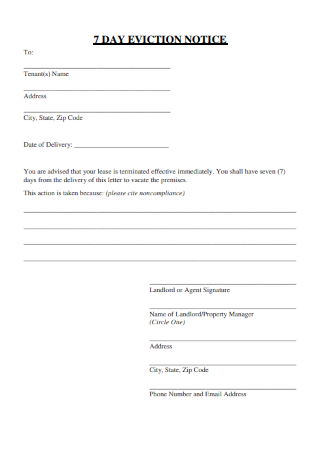
7 Day Eviction Notice
download now
FREE Eviction Notice s to Download
38+ SAMPLE Eviction Notice
What Is an Eviction Notice?
Reasons for Eviction
Tips for Writing an Eviction Notice
How to Create an Eviction Notice
FAQs
How long does the eviction process take in South Carolina?
Can a landlord evict you if there is no lease?
Do you have 30 days after eviction notice?
What Is an Eviction Notice?
An eviction notice is a formal notice or pronouncement handed to a tenant to vacate a particular property. The notice may also sometimes serve as a warning to give the tenant an opportunity to cease or rectify a problem.
According to an online article published by the New York City Council, tenants living in over 19,000 apartments experienced an eviction from their residence. The same report stated that of all the boroughs in New York City, the Bronx had the highest eviction rate with 6,858 evictions in 2018. Brooklyn came in second with 5,701 evictions of the total 19,970 evictions.
Reasons for Eviction
There can be more than one good reason for evicting a tenant. Some reasons may be more grave than others. And there are also perfectly legal reasons to evict a person as provided by law. The following examples describe some major grounds for eviction.
Tips for Writing an Eviction Notice
If you are tasked to write an eviction notice, make sure you do it right. You want to balance your sentiments with clear objectivity and regard for the law. Keep in mind the following tips if you want to craft a clear and professional eviction notice.
How to Create an Eviction Notice
In order to create an eviction notice, you should first ensure that you have valid reason to evict or warn the tenant of a probable eviction. And if you are looking for reliable sample notices to use as reference, you can easily download any template of your choice from the selection above. Choose one that best suits your needs and follow the basic steps below.
Step 1: Basic Information
The first step in crafting an eviction notice is to provide all the necessary details pertaining to the tenant and their stay. Include the date of notice, the lessee’s complete name, complete address, and the current status of their lease and occupancy. It is important to be specific and straightforward with regard to the details. The tenant should know it is directly addressed to them. Also note that the format of your eviction notice will depend on your preferences too. Don’t forget to include an appropriate title (i.e., Eviction Notice or Notice of Eviction). You can also indicate key information using bold or underscored text to emphasize the identity of the recipient of the notice.
Step 2: Pronouncement or Warning
After covering all the essential information, the next step is making the formal declaration. You have to be clear in your pronouncement that the tenant in question is about to be evicted or could face a possible eviction. There is no other way around it. It is almost impossible to sugarcoat an eviction notice. Keep it brief and direct to the point. Ideally, you must also indicate the specific number of days or period of time the tenant has to vacate or rectify the issue. If possible, give a fixed date. This section is necessary before you can proceed to enumerating the grounds for eviction.
Step 3: Reasons and Conditions for Eviction
This section is vital in any formal notice. You cannot evict an individual without just cause. A landlord or property owner would need to state a valid reason or reasons for eviction. As explained and discussed in previous sections, there are certain grounds for evicting a tenant. Some may be more grave than others. Enumerate all that apply and be sure that you can support your argument or claim by providing the necessary documents (e.g., late payment notice, etc.) You could also include terms and conditions such as deadline of rent and the number of days left to vacate the premises.
Step 4: Other Concerns and Signatory
The last step is to confirm that all the above mentioned terms are correct and executory. You can also assure the tenant that you, as the property owner, welcome any questions or concerns. Leave your contact details too in case the tenant wants to seek clarification. At the bottom of the page, don’t forget to state the date and your complete name. Make sure to affix your signature as well.
FAQs
How long does the eviction process take in South Carolina?
According to LawChamps, the eviction process usually takes around 30-45 days.
Can a landlord evict you if there is no lease?
A landlord may evict a tenant even without a formal lease contract. The property owner can still evict as long as there is sufficient and valid grounds to do so.
Do you have 30 days after eviction notice?
Any property owner or landlord is required to hand a formal written eviction notice to a tenant. Unless it is a special case where immediate departure is deemed necessary, the average eviction notice usually gives a grace period of anywhere between a week to a month.
Oftentimes, landlords are left with no choice but to let a tenant go due to all sorts of issues and failures. Still, an eviction notice should be straightforward, justified and fair. Browse the extensive library of sample templates above and download a free sample eviction notice today to get started!
